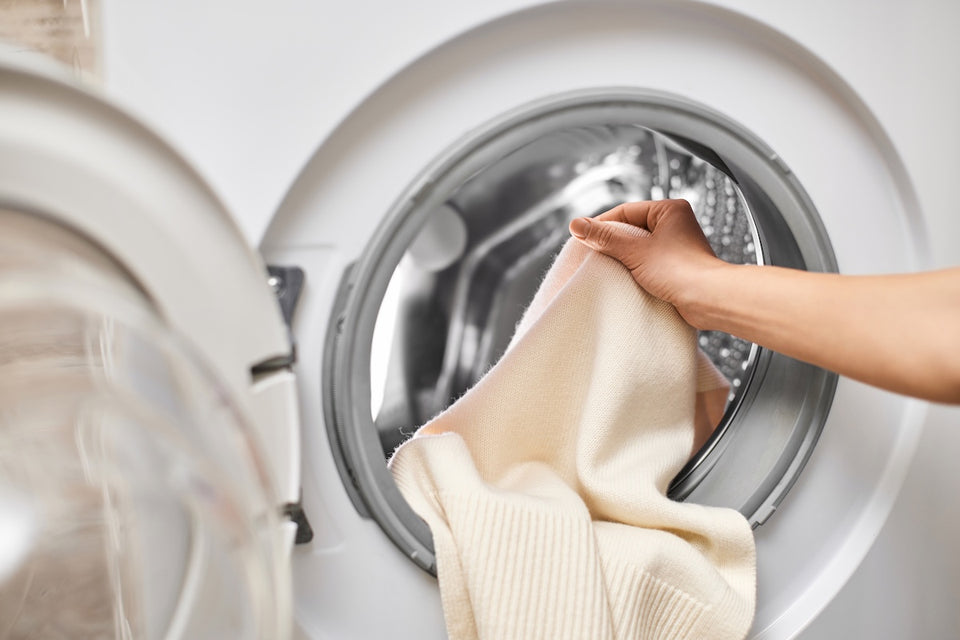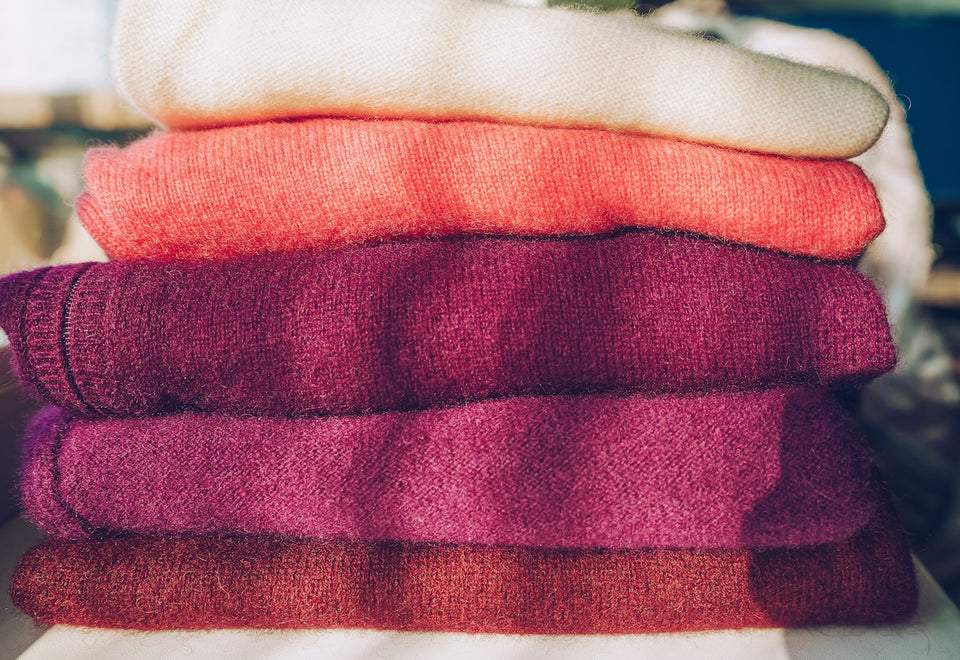How to Wash Cashmere and Keep It Looking New

The Best Way to Wash Cashmere
Hand-washing is the gentlest and most effective way to care for your cashmere. Use cool or lukewarm water (no hotter than 30°C) and a detergent that’s specifically formulated for wool or delicates. Avoid regular detergents, which can be too harsh for cashmere’s fine fibers.
Fill a clean basin or sink with water, add a small amount of detergent, and immerse your garment. Gently swirl it in the water, being careful not to scrub, twist, or wring it. Let it soak for around 5 to 10 minutes, then rinse thoroughly in fresh cool water until all detergent is gone. To remove excess water, press the garment gently against the side of the sink-never wring or stretch the fabric.
Lay the garment flat on a clean, dry towel, roll it up to absorb moisture, then reshape and lay it flat to dry naturally on another towel. Avoid hanging cashmere to dry, as this can distort the shape, especially when wet.
Can You Machine Wash Cashmere?
Some cashmere blends may be labeled as machine-washable, but even then, proceed with caution. Use a mesh laundry bag to protect the item, select the gentlest cycle, keep the temperature below 30°C, and always use a mild wool detergent. Spin cycles should be avoided where possible.

Dealing with Stains and Pilling
Stains should be treated promptly with a wool-safe stain remover. Blot gently - never rub as this can damage the fibers. Avoid using bleach or harsh chemicals.
Pilling is natural in cashmere and tends to appear in areas where the fabric experiences friction, such as underarms or elbows. A fabric comb or cashmere de-piller can be used to gently remove bobbles, restoring the surface without causing damage.
How to Store Cashmere Properly
Once your cashmere is clean and completely dry, careful storage is key to maintaining its softness and shape. Preventing moth infestations in storage is also very important for the longevity of your clothing.
Cashmere should always be folded, never hung. Hanging can stretch the shoulders and distort the shape over time. Place folded items in breathable storage bags made from natural fibers such as organic cotton. Plastic storage containers or vacuum-sealed bags may trap moisture and encourage mildew, so they’re best avoided.

Choose a cool, dry, dark place for storage, and add natural moth deterrents like cedar blocks, lavender sachets, or herbal repellent pouches. These work best when freshly scented and replaced regularly. Importantly, make sure all items are thoroughly cleaned before storing - moths are not only drawn to natural fibers like cashmere, but to traces of body oils, food stains, or perspiration as well.
Why Clothes Moths Love Cashmere
The main species responsible for damage is the Webbing Clothes Moth (Tineola bisselliella). While the adult moths don’t feed, the larvae are the ones doing the damage. These tiny caterpillar-like creatures feed on keratin - a protein found in natural animal-based fibers such as wool, silk, feathers, fur, and cashmere.
Moths are most active during warmer months, and they prefer to lay their eggs in dark, undisturbed areas. That’s why garments stored long-term in closets, drawers, or storage boxes are at greater risk. If the item is unwashed, the risk increases because organic residues on the fabric help larvae digest keratin and make the environment even more appealing.
How to Monitor for Moths

Even if you’ve taken all the right steps in cleaning and storing your cashmere, it’s smart to keep an eye on potential moth activity. Clothes Moth Traps are one of the most effective monitoring tools available. These traps use natural pheromones to attract adult male moths, interrupting the breeding cycle before eggs can be laid.
Place traps in wardrobes, under beds, behind furniture, and near storage areas. Replace them every 12 weeks or sooner if they become full. Regularly check the traps for activity - early detection is the key to stopping an infestation before any damage is done.
Final Thought
Caring for cashmere takes more than a delicate wash - it requires protection, too. With careful cleaning, proper storage, and the use of Clothes Moth Traps to monitor activity, you can keep your knitwear beautifully preserved.
At MothPrevention we have years of experience in dealing with moth infestations and helping our customers overcome their moth problems. Our traps are designed to help you spot an issue early and break the breeding cycle before damage begins. With the right care, your cashmere can remain soft, luxurious, and moth-free season after season.
About MothPrevention
MothPrevention® speak to customers every day about their clothes moth issues - clothes moths are a species that are ever increasing and that can cause significant damage to clothes, carpets and other home textiles.
To date, we’ve helped over 250,000 customers deal with their moth problems. We have developed professional grade solutions including proprietary pheromones and trap design, not available from anybody else in the USA.





